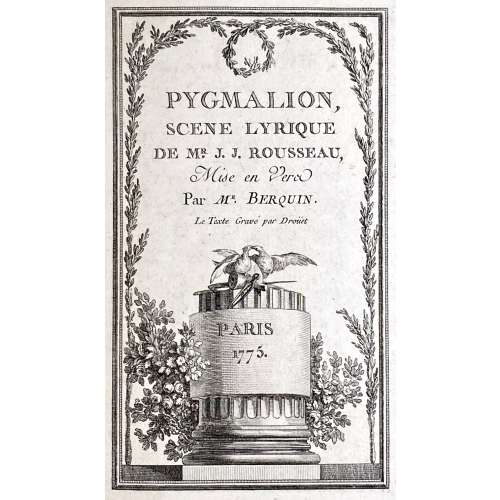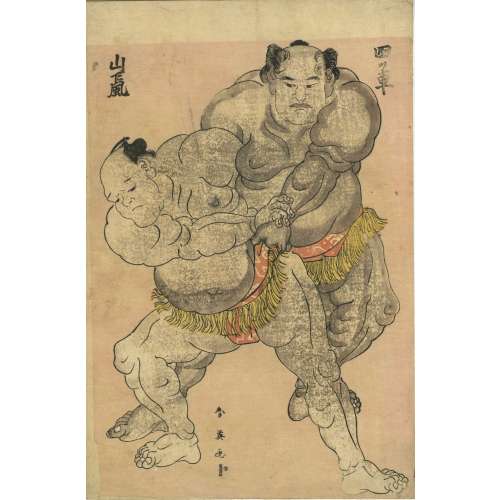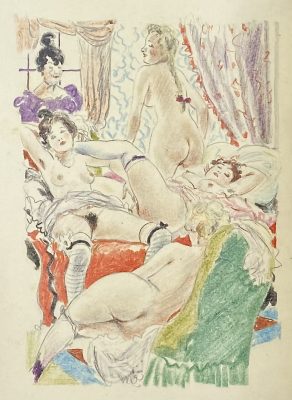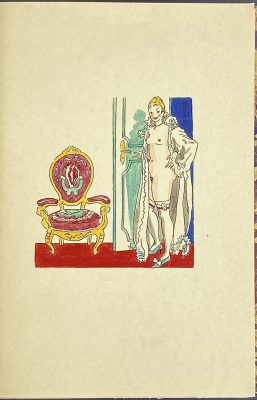Description: Hardcover, 20.5 x 16 cm, contemporary binding, ¾ calf with raised bands over marbled boards in a marbled slipcase, marbled endpapers, original wrappers preserved, t.e.g., gilt lettering to spine.
Content: Scapin Maquereau, drame en un acte par M. Albert Glatigny; La grisette et l’étudiant, pièce en un acte par M. Henry Monnier; Le bout de l’an de la noce, parodie du bout de l’an de l’amour de M. Théodore Barrière par MM. Lemercier de Neuville et J. du Boys; Un caprice par Lemercier de Neuville; Les jeux de l’amour et du bazar, comédie de mœurs en un acte par Lemercier de Neuville.
Title-page: LE THÉATRE ÉROTIQUE | DE LA RUE DE LA SANTE | {vignette} | PARIS | — | 1932 ||
Collation: 2 blanks, original front wrapper with blue lettering «
LE THÉATRE ÉROTIQUE |
DE LA RUE DE LA SANTE», [1]
4 (2 blanks, frontis., h.t. / limitation), [2]
4 (t.p., f.t.p., 2 leaves of text), 3-18
4 (incl. 2 blanks), original back wrapper, original spine, 2 blanks; 5 full-page illustrations within collation, 5 original drawings extraneous to collation.
Pagination: [4] [1-8] 9-135 [136] [4], ils.
Limitation: 20 copies on
Japon and 250 copies on
Vélin, this is
copy № 12.
Edition: 1
st edition thus, illustrated with 20 stencil-coloured (au pochoir) photogravures, 5 of them full-page after Feodor Rojankovsky [Rojan], enriched with 5 full-page original crayon drawings by the same artist.
Provenance: Stamp with J.-P. Dutel device to 1
st blank leaf.
Catalogue raisonné: Dutel (1920-1970): 2498, p. 385; Nordmann/Christie’s (2) 515, p. 251
Contributors:
Feodor Rojankovsky [Rojan, Фёдор Степанович Рожанковский] (Russian-American, 1891 – 1970) – artist.
Joseph Albert Alexandre Glatigny (French, 1839 – 1873) – author.
Henry-Bonaventure Monnier (French, 1799 – 1877) – author.
Théodore Barrière (French, 1823 – 1877) – author.
Louis Lemercier de Neuville [La Haudussière, Louis Lemercier] (French, 1830 – 1918) – author.
Jean Charles Duboys [Du Boys] (French, 1836 – 1873) – author.
Original crayon drawings by Rojan:
Colour prints after Rojan's drawings:








 Image from
Image from 





























